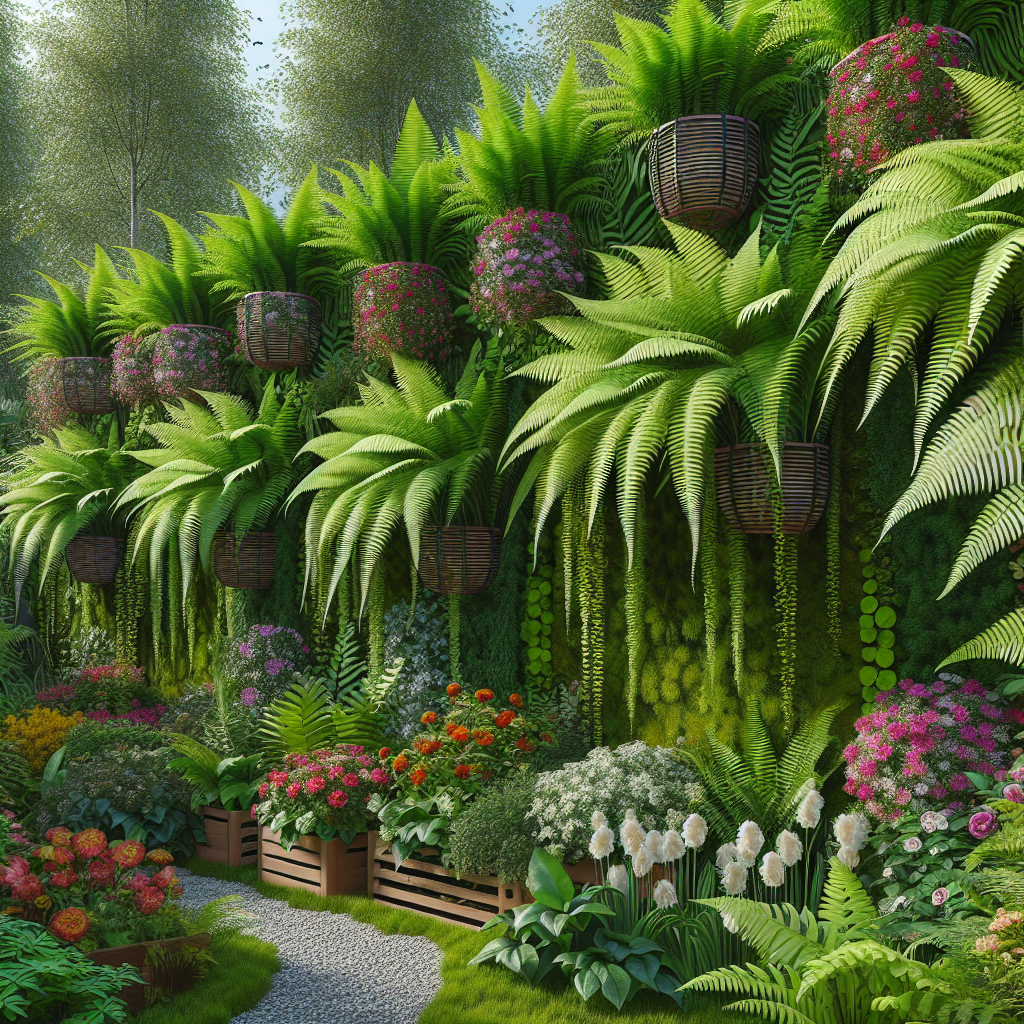Ferns are a versatile and beautiful addition to any garden. Their delicate fronds add texture and color while their ability to thrive in a variety of conditions makes them easy to incorporate into virtually any garden design. In this article, we will explore some creative ways to incorporate ferns into your garden design to create a lush and inviting outdoor space.
1. Create a Fern Border
One of the simplest ways to incorporate ferns into your garden design is by creating a border using different varieties of ferns. Choose ferns with contrasting textures and colors to create visual interest along the edge of planting beds or walkways. Consider mixing evergreen ferns like Autumn Fern (Dryopteris erythrosora) with more delicate varieties like Maidenhair Fern (Adiantum spp.) for a dynamic border that will add depth and movement to your landscape.
2. Plant Ferns in Containers
Ferns are well-suited for container gardening, making them an excellent choice for adding greenery to patios, decks, or other small outdoor spaces. Plant ferns in decorative pots or hanging baskets and place them strategically around your outdoor living area to create a lush and tropical oasis. Consider mixing different varieties of ferns with trailing plants like ivy or sweet potato vine for added interest.
3. Create a Fern Garden
If you have a shaded area in your garden that is difficult to plant, consider creating a dedicated fern garden. Choose a variety of fern species that thrive in low light conditions and plant them together in groupings or drifts for a naturalistic look. Add mulch or gravel pathways between plantings to create visual interest and make it easier to navigate through the space.
4. Use Ferns as Groundcover
Ferns can be an excellent alternative to traditional groundcovers like grass or ivy. Plant low-growing varieties like Japanese Painted Fern (Athyrium niponicum) or Southern Wood Fern (Dryopteris ludoviciana) in shady areas where grass struggles to grow, such as under trees or along the edge of buildings. The dense foliage of ferns will help suppress weeds while adding texture and color to the landscape.
5. Incorporate Ferns into Rock Gardens
Ferns are well-suited for rock gardens due to their ability to thrive in rocky, well-drained soil conditions. Plant fern species that prefer dry or sandy soil, such as Lady Fern (Athyrium filix-femina) or Christmas Fern (Polystichum acrostichoides), among boulders or rocks for a naturalistic look that mimics their native habitat. Use gravel mulch around plantings to help retain moisture and control weeds.
6. Mix Ferns with Other Plants
Ferns can be effectively mixed with other plants in the garden to create attractive combinations that provide year-round interest. Pair fern species with flowering perennials like hostas, astilbes, or heucheras for an eye-catching display that will brighten up shady corners of the garden. Consider incorporating dwarf evergreen shrubs like boxwood or yew for structure and contrast against the soft foliage of ferns.
7. Create Water Features with Ferns
Ferns are well-suited for planting around water features like ponds, fountains, or streams due to their love of moist soil conditions. Create naturalistic plantings around water features using fern species that thrive in wet environments, such as Royal Fern (Osmunda regalis) or Cinnamon Fern (Osmunda cinnamomea). Use rocks and boulders around the edge of water features to create visual interest and provide additional planting opportunities for groundcovers like mosses or sedges.
In conclusion, there are countless creative ways to incorporate ferns into your garden design that will add beauty and interest throughout the seasons. From creating borders and groundcovers using different varieties of ferns to planting them in containers on patios or decks, there is no shortage of options for adding these versatile plants to your outdoor space. Whether you have a shady corner that needs brightening up or want to create a lush oasis with water features, there is sure to be a way you can use ferns effectively in your garden design.













